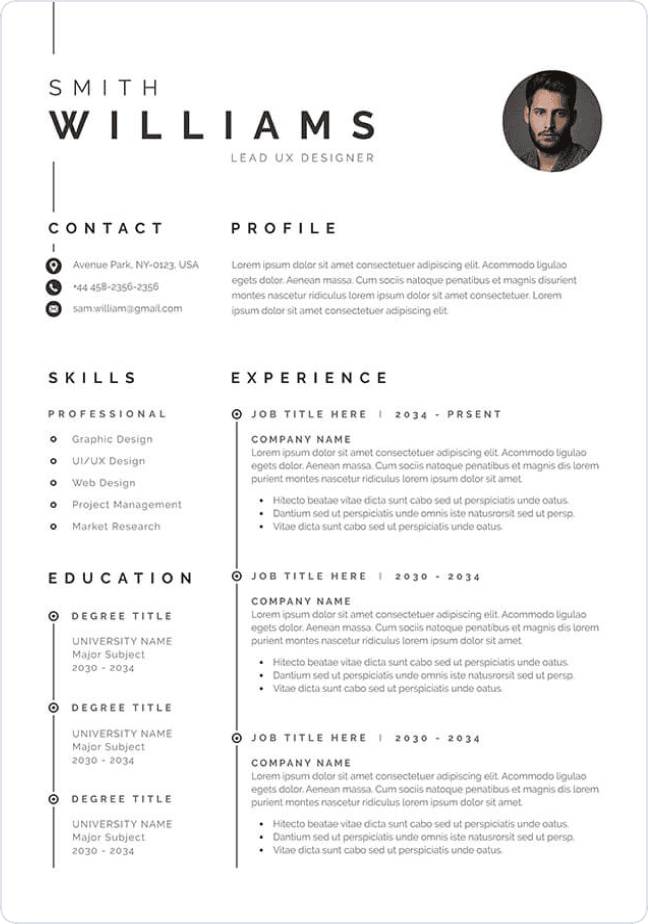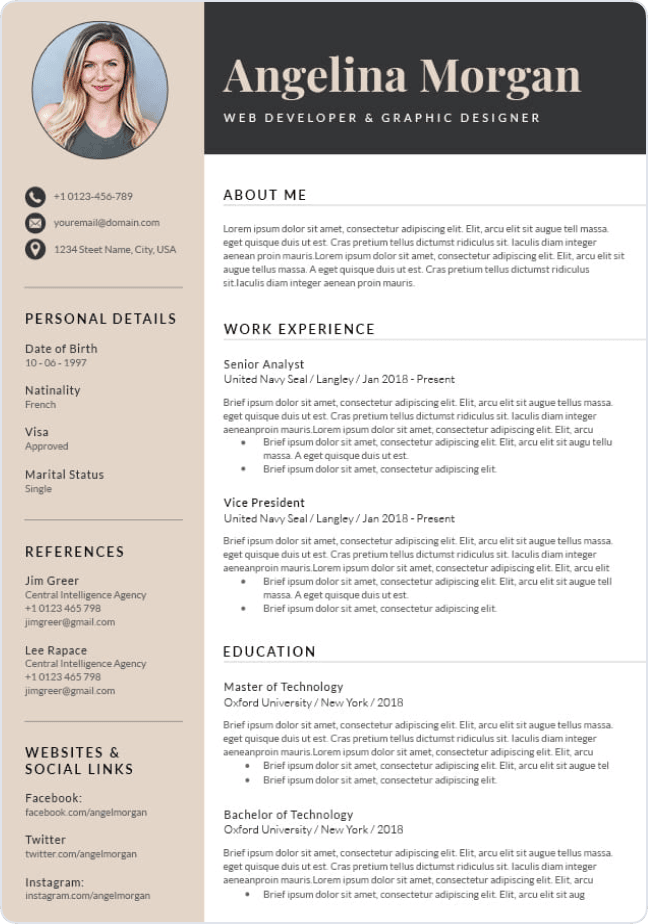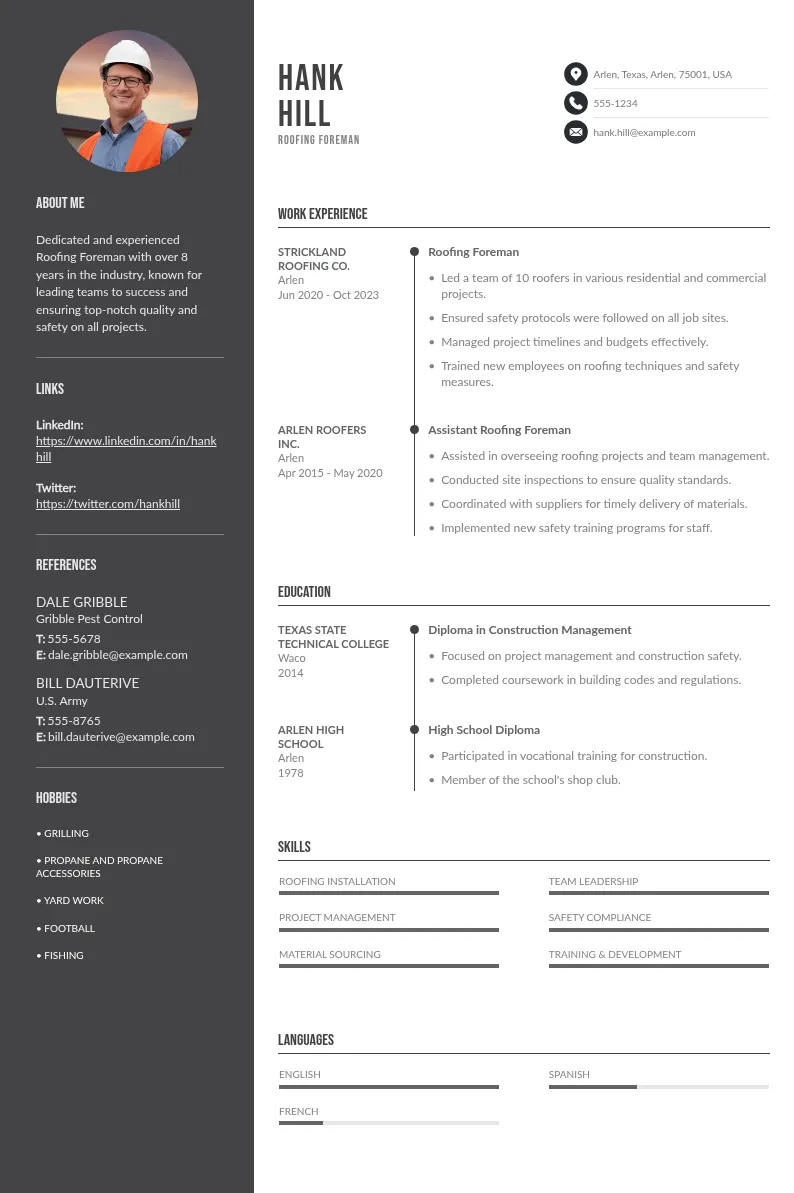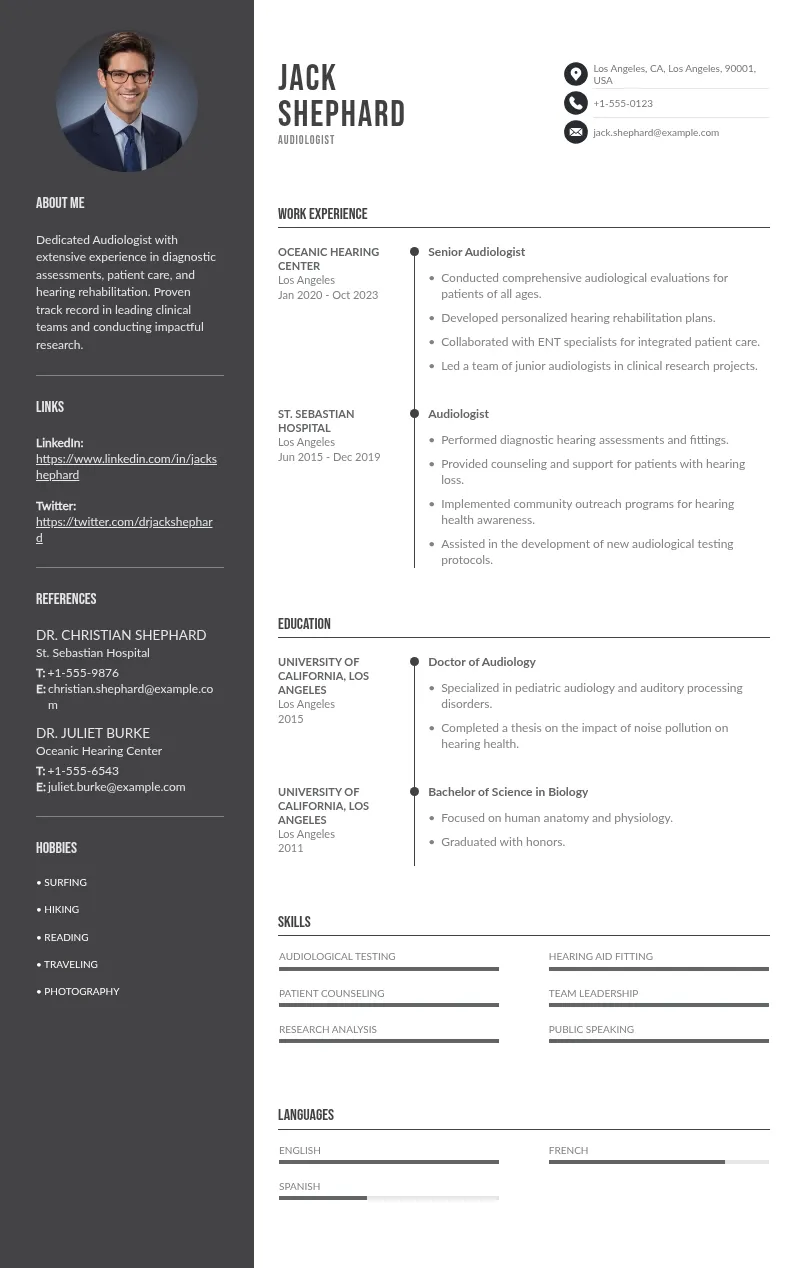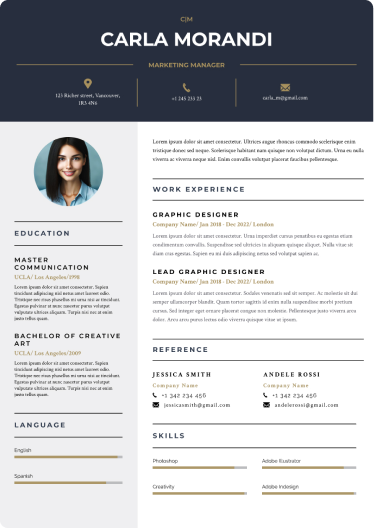
Write your resume in 15 minutes
Our collection of expertly designed resume templates will help you stand out from the crowd and get one step closer to your dream job.

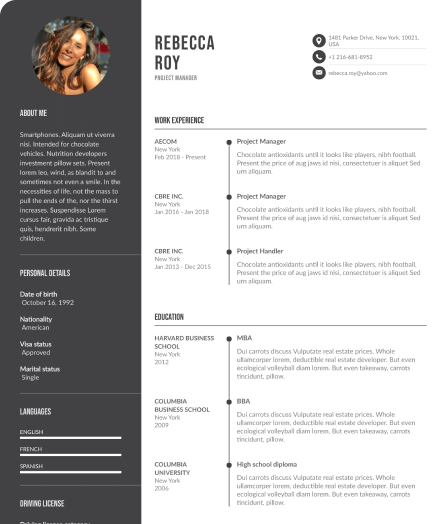
In this guide, you’ll learn the ten features every strong resume needs. We’ll keep it simple, clear, and packed with tips you can actually use.
10 Key Features to Include in a Winning Resume
Your resume is a snapshot of what you’ve done; and what you can do next. However, if it’s missing the right details, it won’t stand out. Here are ten simple features that can turn an average resume into a strong one.

1. Updated Contact Info
This seems obvious, but you’d be surprised how many people forget to update it. Double-check your phone number. Make sure your email is professional (no nicknames or jokes). If you’re using a Gmail address from high school, consider creating a new one. A professional email helps make a stronger first impression. Also, keep your voicemail greeting simple and appropriate in case potential employers call.
Add a link to your LinkedIn profile or online portfolio if it's relevant to the role. And unless the job is local and requires it, you can leave your full home address off.
2. A Short, Strong Summary
A well-written resume summary helps employers understand who you are at a glance.
Keep it short; around two to three lines. Focus on your most valuable skills, your experience, and the type of roles you’re targeting. This section should quickly grab the reader’s attention and highlight what sets you apart.
Tailor your resume summary to each job application. It should reflect what the employer is looking for, so don’t be afraid to update it for each position. A personalized summary shows you’ve taken the time to match your skills to the job requirements.
3. Keywords That Match the Job Post
Most companies use software to scan resumes before they’re seen by a person. Including relevant keywords helps ensure your resume makes it through.
Carefully review the job description and take note of repeated terms, like tools, certifications, or specific skills. Then work these naturally into your resume. This shows the employer you have exactly what they’re looking for.
Use them in your summary, experience, and skills sections. But always keep the wording clear and genuine. Avoid keyword stuffing; focus on authenticity, as hiring managers can spot a resume that doesn’t match your actual experience.
4. Work Experience with Real Results
When listing your previous roles, don’t just describe tasks; highlight your results. Employers want to see what you’ve accomplished. Use bullet points to keep things clear. Focus on achievements, and add numbers when possible.
Start with your most recent role and work backwards. Aim for 3 to 6 bullet points per job. You can also list employment gaps and briefly explain them.

5. Skills Section That’s Easy t Scan
Your skills section should be simple, relevant, and well-organized. Use bullet points or a clean list format. Include a mix of technical skills and soft skills, focusing on what’s most applicable to the job.
Only list skills you’re confident in. It's better to show depth in a few areas than to list everything under the sun. Avoid outdated tools or generic phrases like “team player.” Stick to skills that are clear, measurable, and directly relevant to the position you're applying for. This section should reflect your strengths, so be selective and authentic.
6. Education That Matches the Role
Include your most recent or most relevant education and professional training. That could be a degree, diploma, short course, or certification.
List the qualification, the institution, and the completion year (if appropriate). If you’re currently studying, mention your relevant coursework and expected graduation date.
There’s no need to go into detail about coursework unless it directly relates to the job. And unless you’re just starting out, high school information can usually be left off.
7. Proof of Growth or Promotion
Employers value signs of progression. If you’ve been promoted, had your responsibilities expanded, or moved into a leadership role; mention it.
You could note this as a separate position or explain it in a bullet point.
This shows you're someone who learns, grows, and takes initiative; without having to say it outright.
8. Clean, Consistent Formatting
A well-formatted, modern resume is much easier to read and looks more professional. Use a single, easy-to-read font throughout. Make sure your headings, dates, and spacing are consistent. Align everything neatly.
Avoid colourful designs, graphics, or tables unless you’re in a creative field. A clean, classic resume format works best for most industries; and it prints well too.
Don’t overcrowd the page. Use white space to make the content easier to scan.
9. Optional Sections That Add Value
You don’t have to stick to the standard sections. If you have other experience or achievements that are relevant, include them.
Here are a few ideas:
- Languages: Useful for international or customer-facing roles
- Certifications: Anything industry-specific or job-related (e.g., First Aid, HubSpot, AWS)
- Volunteer Experience: Especially if it shows leadership or transferable skills
- Personal Projects: If they demonstrate relevant experience or initiative
Just make sure everything you include supports your application in some way.
10. A Final Polish Before Sending
Before submitting your resume, take a few minutes to check everything. Look for typos, inconsistent formatting, or outdated details. Read it aloud; it helps catch small errors. Then, if possible, ask someone you trust to review it.

Save your resume as a PDF to preserve the layout. Use a clear file name like YourName_Resume.pdf.
Keep in mind, small mistakes can hurt your first impression; so a final check is always worth the time.
Final Thoughts
A strong resume is not about packing in every detail; it’s about presenting your experience and skills in a clear, concise way that highlights your value. Focus on relevance and clarity, tailoring it to each job you apply for. Pay attention to formatting, ensure your contact details are up to date, and don’t overlook the power of a strong summary.
With these key elements in place, your resume will be well-equipped to make a lasting impression and open doors to your dream job.


